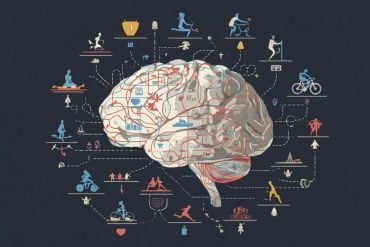Summary: Researchers highlighted that around 13% of Norwegian employees are at high risk of burnout. The study introduces a novel tool, the Burnout Assessment Tool (BAT), designed to identify individuals at risk of burnout by measuring exhaustion, mental distancing, cognitive and emotional impairment.
This tool, now being tested in over 30 countries, aims to facilitate early intervention and prevent the long-term consequences of burnout, which include a range of physical and psychological issues. With a focus on both individual and workplace interventions, the researchers underscore the importance of addressing high demands and limited resources to safeguard employee health.
Key Facts:
- Prevalence of Burnout: About 13% of Norwegian workers are identified as being at high risk for burnout, signaling a significant occupational health concern.
- Introduction of BAT: The Burnout Assessment Tool is a new, promising instrument for early detection of burnout risks, measuring key factors like exhaustion and cognitive impairment.
- Long-term Impact and Solutions: Burnout can lead to serious health issues and decreased productivity. The study emphasizes the need for both individual treatments and workplace adjustments to prevent recurrence and promote a healthier work environment.
Source: NTNU
It is not uncommon for people to “hit the wall” at work and experience burnout for short or long periods of time.
“We have found that approximately 13 per cent of Norwegian employees are at high risk of burnout,” says Leon De Beer, Associate Professor of Work and Organizational Psychology at the Norwegian University of Science and Technology (NTNU) Department of Psychology.
De Beer has contributed to a new study on burnout published in the Scandinavian Journal of Psychology with colleagues from the Healthy Workplaces research group.

They are working on a new tool that can identify people at risk of burnout. (A simplified version can be found at the bottom of this article.)
Signs that you might be at risk of burnout
If you are facing demands and stress at work that seem to be intractable, and you have frequently experienced the following symptoms in recent weeks, it might be a sign that you are on the verge of burning out:
- You feel mentally exhausted at work.
- You struggle to feel enthusiastic about your job.
- You have trouble concentrating when working.
- You sometimes overreact at work without meaning to.
Early intervention is key
It is important to identify the early signs of burnout in order to mitigate the harmful effects. The warning signs are often present before things have gone too far, as long as we manage to identify them.
“Not addressing the risk of employee burnout in time can have long-term consequences,” says De Beer.
The physical and psychological effects of burnout include cardiovascular disease, pain related to musculoskeletal injuries, sleeping problems, and depression. Organisations can also lose talented employees and experience an increase in sickness absence and lost productivity.
A new tool may become standard
De Beer’s research group has trialled a new measurement tool to identify the early warning signs of burnout. In the past, it has not always been that easy.
“Previously, we have not had a detailed enough measurement tool for use in both the field of practice and research that identifies workers who are at risk of burnout,” says De Beer.
There is currently no international standard for assessing burnout.
The new tool is called the Burnout Assessment Tool, or BAT among researchers who have a penchant for amusing abbreviations. The BAT consortium, of which the researchers are a part, is now testing the instrument in more than 30 countries.
“Our studies show that BAT is a good tool for identifying the risk of burnout,” says De Beer.
Burnout is the body’s response to stress
BAT measures four main groups of risk factors: exhaustion, mental distancing, cognitive impairment and emotional impairment.
Burnout is not really an illness, but a feeling of being mentally or physically exhausted – the body’s response to a lasting, demanding situation. (See the fact box.)
Burnout is normally defined as a work-related syndrome, but there is evidence that work–life balance also plays a role. Stress and burnout don’t necessarily stop when you go home at the end of the day, as these effects often extend into other areas of life and vice versa.
Some people may experience years of burnout
For some people, burnout can be stopped in its tracks and solutions found to improve their situation. For others, however, burnout can last for years if the problem isn’t addressed.
“We can deal with burnout through individual treatment, but it is of little use if people return to a workplace where the demands are too high and there are few resources. It is then highly likely that the employee will become ill again. Therefore, it is important to create good working conditions and structures that safeguard the health of employees,” says Professor Marit Christensen at NTNU’s Department of Psychology.
Studied 500 workers
The researchers studied a representative sample of 500 Norwegian workers. Norway is roughly on par with the EU average when it comes to mental health, but somewhat better when it comes to work-related matters.
A lower percentage of the Norwegian population struggles with exhaustion in connection with work. Somewhat fewer people than the EU average report health hazards at work, and we experience a better work–life balance.
“Using a recognised method, we found that around 13 per cent of the 500 surveyed workers were at high risk of burnout,” says Professor Christensen.
The tool can help identify who requires the most urgent follow up so that the risk of burnout can be reduced.
Uncertain whether Norwegian numbers are high
We do not yet know whether the prevalence of burnout in Norway is high in an international context. The Norwegian study is among several BAT studies that are currently taking place, so these answers will be available at a later date.
The tool is intended to be culturally independent, and it certainly works well in Norway. The researchers also found that the tool works regardless of gender.
“For entertainment and educational purposes, interested parties can use our online tool to test if they are at risk of burnout,” says Professor Christensen.
The tool can be found here: https://theburnout.app/?mod=no
“Please note that the tool only gives an indication of risk and does not provide any type of formal diagnosis or medical advice. If you are concerned about your levels of work-related stress, we encourage you to visit a health care provider to discuss the matter,” says Professor Christensen.
About this psychology research news
Author: Nancy Bazilchuk
Source: NTNU
Contact: Nancy Bazilchuk – NTNU
Image: The image is credited to Neuroscience News
Original Research: Open access.
“The psychometric properties of the Burnout Assessment Tool in Norway: A thorough investigation into construct-relevant multidimensionality” by Leon T. De Beer et al. Scandinavian Journal of Psychology
Abstract
The psychometric properties of the Burnout Assessment Tool in Norway: A thorough investigation into construct-relevant multidimensionality
Objective
The World Health Organization recognizes burnout as an occupational issue. Nevertheless, accurately identifying employee burnout remains a challenging task. To complicate matters, current measures of burnout have demonstrated limitations, prompting the development of the Burnout Assessment Tool (BAT). Given these circumstances, conducting an in-depth examination of the BAT’s construct-relevant multidimensionality is crucial.
Method
This study focuses on both the original 23-item BAT and the short 12-item version, using modern factor analytic methods to investigate reliability, validity, and measurement invariance in a representative sample from Norway (n = 493; 49.54% women).
Results
Our findings revealed that the bifactor exploratory structural equation modeling solution (burnout global factor and four specific burnout component factors) best explained the data for both BAT versions. All factors demonstrated adequate omega coefficients, with the global factor showing exceptional strength. Both BAT versions correlated highly with each other and with another burnout measure, suggesting convergent validity. Furthermore, both BAT versions achieved full (strict) measurement invariance based on gender. Finally, our results showed that burnout acts as a mediator in our proposed job demands–resources model as preliminary evidence of predictive validity.
Conclusions
The study validates the Burnout Assessment Tool in the Norwegian context. The study supports the reliability, validity, and unbiased nature of the tool across genders. The findings also reinforce the importance of job demands and resources, along with burnout as a key mediator, in understanding workplace dynamics in accordance with job demands–resources theory.







